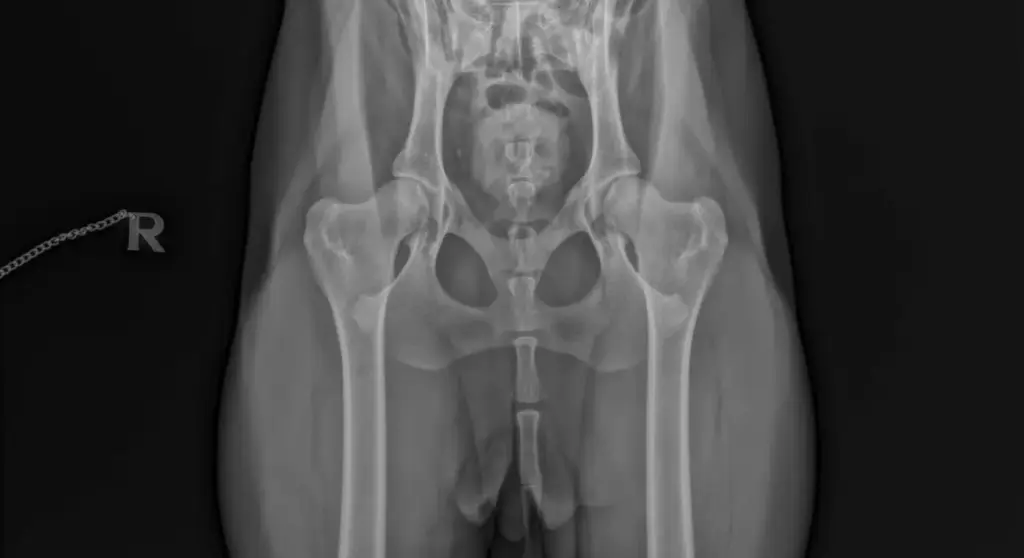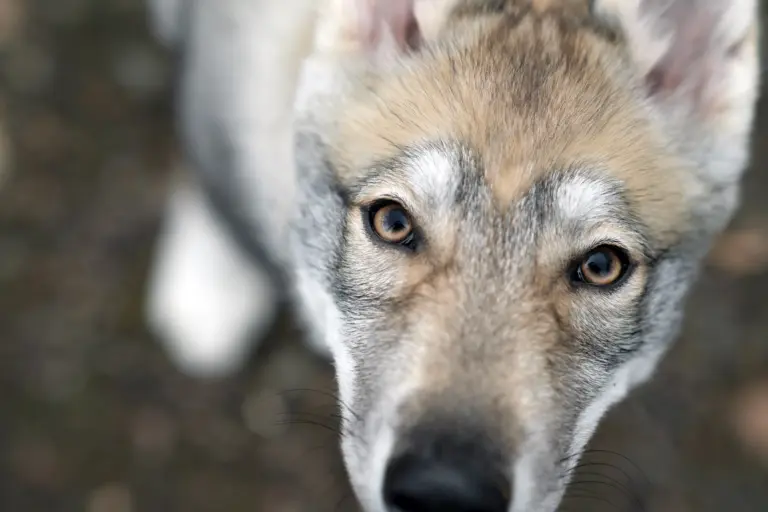Why this assumption is dangerous?
Why do I write myth? Because there is a persistent belief that Wolfdogs are less susceptible to diseases because of their wolf ancestry.In this blog article, I would like to clarify why Wolfdogs are by no means less susceptible to hereditary diseases.
Wolves – disease-free?
First of all, there is a widespread misconception that wolves in the wild are free from health problems. This is not true. Wolves can suffer from serious illnesses too, but these are not documented or treated in the wild. A wolf suffering an epileptic seizure usually has no chance of survival. There is also a lack of reliable data on hereditary diseases such as hip dysplasia (HD) in wild wolves. No research team has yet sampled a decent number of wolves and had them officially evaluated.
Here is a little anecdote from Fabienne:
A wolfdog owner from the US received a coyote shot in the state of Kentucky that was ‘brindle’ in colour in order to process the fur. Brindle is also known here as brindled, common for example in boxers. The wolfdog owner was curious about the colour and decided to embark the female coyote.

As expected, Embark recognises the female as a pure coyote; no dog content could be detected. She was feral and shot by hunters, which means her genes are very likely represented in the wild coyote population in Kentucky.
When you look at the health tests at Embark, it gets interesting. She carries two copies of ‘Von Willebrand’s disease,’ a blood clotting disorder that makes the animals generally more susceptible to things like bleeding gums while also inhibiting blood clotting, which massively increases the risk of bleeding to death from cuts, bites, and scratches. Giving birth would also be extremely risky. With two copies of the gene, the female dog is affected. Even without being shot, her life expectancy was not very high. A simple injury or a litter could have cost her her life.

In addition, she carries one copy of SPAID, also known as Shar-Pei fever. As the name suggests, SPAID, according to current knowledge, occurs primarily in Shar-Peis. SPAID is an autoimmune disease, typically with flare-ups of high fever and severe joint inflammation. As a carrier, the female dog would have been spared the consequences in this case, only dogs with two copies show symptoms. If she had been affected, her life expectancy would not have been very high either: in affected dogs, a fever episode without medical treatment is usually fatal.

If she had had a litter with a healthy partner, which she would have surprisingly survived, all puppies would still be carriers of Von Willebrand’s disease and each puppy would have a 50% chance of carrying SPAID. However, since her inbreeding coefficient of 9% indicates a gene pool that is somewhat more defined, it is possible that her partner or the partners of her offspring would not have been carriers or affected either. The diseases would therefore most likely have severe consequences for the next generations as well.
Wolfdog – The best of both worlds?
The belief that Wolfdogs are healthier is often based on the idea that the wolf content reduces susceptibility to disease. However, in addition to the wolf content, the genes of all the breeds of dog that go into the respective mix also play a role. This means that the range of possible inherited diseases is even greater in the case of mixed-breed dogs.
Joint problems such as HD (hip dysplasia) and ED (elbow dysplasia) are common in sheepdogs and can occur in mixed-breed dogs with Wolfdogs.
Degenerative myelopathy (DM), a nerve disease that always has a poor prognosis, is also present in many Wolfdogs, as is MDR1, a genetic mutation that causes hypersensitivity to certain medications.
As an example, here is Wolfdog Ella, who has over 50% wolf in her:

Eye diseases also play a major role, especially in Nordic breeds in the mix.Recently, the Collie Eye Anomaly has reappeared in the carrier status in the Tamaskan.
Prevention is the key
All of these possible diseases show how important it is to have Wolfdogs thoroughly examined before deciding on breeding. Common health screenings are essential to ensure that hereditary diseases such as DM or dwarfism are not passed on to future generations. Especially with HD and ED, owners and breeders should take care to select partners carefully to minimise risk.
Very important: only official evaluations by specially trained veterinarians provide meaningful results. Pet vets are usually not trained comprehensively enough to make reliable diagnoses of genetic problems such as HD, ED or eye diseases.

Documentation as protection
Even more important than the tests themselves is proper documentary evidence. There are numerous diseases for which there are currently no tests, such as Addison’s disease or epilepsy. If these diseases are not properly documented, they can become established in a breeding line for generations. Without clear evidence of the origin, the trigger remains undetected and in the worst case, entire breeding lines have to be removed from breeding. This not only reduces genetic diversity, but also carries the risk of losing healthy genes.
In our database, such non-testable diseases are carefully documented and can be viewed by members at any time. In the extended pedigree, diseases of your choice can even be highlighted!
Conclusion: The myth of the healthy Wolfdog
The myth that Wolfdogs are less susceptible to disease because of their wolf ancestry is persistent, but it is simply wrong. Wolfdogs are just as susceptible to disease as other dogs. In fact, it is often much more difficult to assess the risks correctly because the documentary evidence is significantly worse than with purebred dog clubs. That is why it is all the more important that breeders have all relevant health tests carried out and transparently document any abnormalities for which there are no tests. This is the only way to ensure responsible breeding that benefits both the animals and their owners. The EWA therefore documents as much information as possible to provide its breeders and owners with a wide range of data. The extensive database and various tools help to address this very issue. In addition, all members are obliged to contribute any information relevant to the breeding of their dogs. This way, we can work together to assess risks and combat diseases.






